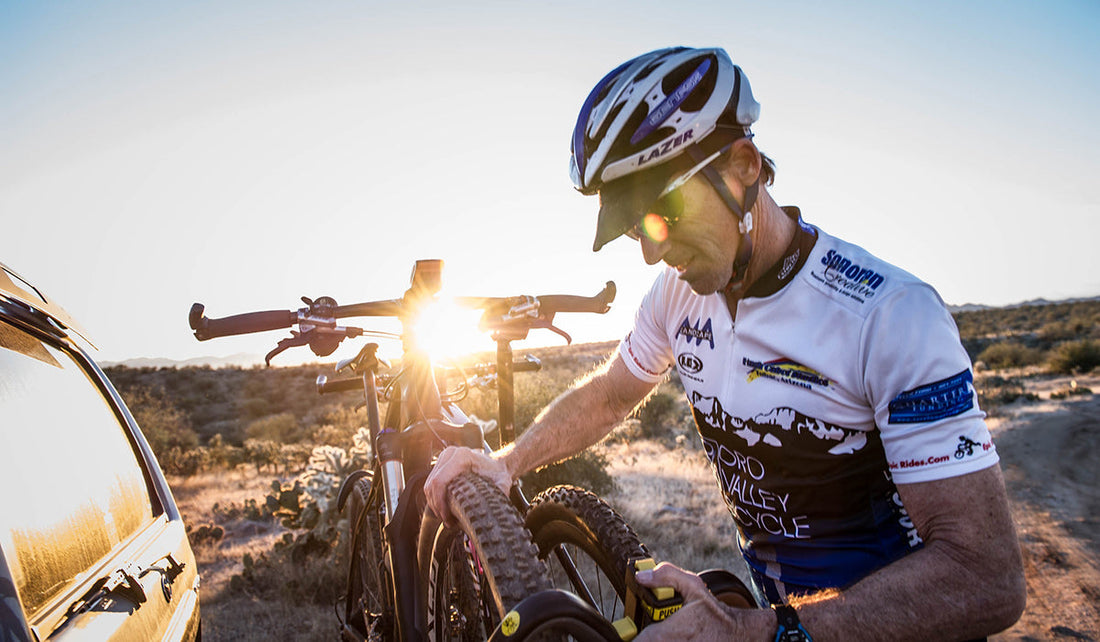By Sarah Reiter, Saris Product Manager
Launching a new product into the market is a little like preparing to have a baby. Even when it's not the first time you've done it, the trepidation, the anxiety and the excitement make it feel like you are in new territory each and every time. No matter how much preparation (think birthing classes, reading books, etc.), or thought and planning (think carefully written and edited 8 page birth plans) you've done in the months leading up to the launch birth, there's still that moment when you need to take the leap, flip the switch and put the product baby out in the real world.
In the product development world, engineers have spent months transitioning a product design from the theoretical, how the product SHOULD work, to the real world application of how it DOES work. Iterations, prototypes and models all help to address all the design nuances and issues prior to the final design release. At Saris, we have been launching new car rack products for over 40 years.
We've gone through this process time and time again. Given the nature of our business, and our commitment to safe and secure products for our customer's bikes, cars and the cars around them - the testing process we go through is paramount. We feel so strongly about our test process that we put a lifetime warranty on every bike rack product that goes out our door.
The Saris Testing Process
Our testing process has a number of key technical tests, overseen by our Test Engineer, Todd. Even though he doesn't normally wear the lab coat and pocket protector, he does follow an exacting scientific test process, which includes:
-
Strength Testing: This testing process is conducted on both a component level as well as a full system level. Each part is tested for robustness (think hooks, ratchets, straps, fasteners, arms, etc.), and once the individual components are proven, the rack as a whole system is run through a battery of tests. Tests for robustness and ultimate load are run on the tensile test machine, and we also test for resistance to corrosion (think winter salt on the roads) and UV impact.

A SUPERBones car rack arm goes through an ultimate load test.
-
Vibration Testing: One of our harshest tests is the vibration test. Each rack is put through hundreds of hours on our shaker table. This tests for component fatigue and general durability. Lifetime = lifetime. That's a long time, and we ensure that these racks will live up to our claim.

Test bikes loaded up on a SUPERBones trunk rack for vibration testing.
-
Road Testing: Once proven in the lab, the car racks are taken to the streets. Racks are driven over speed bumps, agility courses, emergency stops and more. Additionally, thousands of miles are put on each bike rack model before being released.

Taking these mountain bikes for a test ride on the SuperClamp 2-bike car rack.
-
Fit Testing: Racks need to be able to accommodate our most adventurous customers. As the seasons change, the racks need the ability to carry road, mountain, tri, cross and fat bikes. To ensure proper fit to your vehicle, each rack is meticulously test fit on hundreds of cars.

The Bones 2-bike trunk rack getting a fit approval on the 2014 Toyota Corolla sedan.
The User Test
Once the products have passed our rigorous standards in the laboratory tests and the theoretical analysis, the last step in our development process is to conduct a user test.
The goal of the user test is to ensure that our products operate in the real world the way they operated in our controlled environment. The development team is too close to the products to really be objective – we made them, so we know all the ins and outs, and secret tips to have the product do what we expect it to do. So, we need users to spend time with our products and to provide feedback on their experience – is it as intuitive as we think? Is the product as easy to use as we think? Are there elements in the real world that work better or worse than we expected them to do?
Our standard user test is a 30 day use test – put the rack on and off the car every day for 30 days; put bikes on and off the rack every day for 30 days; drive with bikes on the rack every day for 30 day. This repetitive use by an outside tester (i.e., someone like you) is the step in the process that tells us "what we don't know". It's a critical way to bring in outside experience and help us understand the differences in our consumers.
This user testing only works if we have engaged consumers willing to partner with us on this step. In exchange for the work you do, you will receive a brand new rack and also get satisfaction that you have helped launch cool new products to the market. If you are interested in participating in a user test, we would welcome your involvement. Contact me directly, sreiter@saris.com, to find out how you can help.
.jpg)
Want to help us test our next great bike rack? Contact Sarah at sreiter@saris.com.
This entire testing process is backbone of what has made Saris successful for the past 40 years. Our commitment to safety and to making the best products on the marketplace are unparalleled. Thanks in advance for being part of what makes Saris special, and thanks for helping us provide excellence in everything we do. My inbox is waiting for your feedback -- get in touch!
